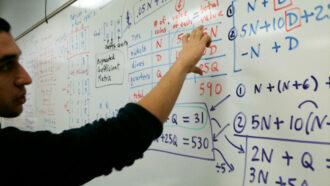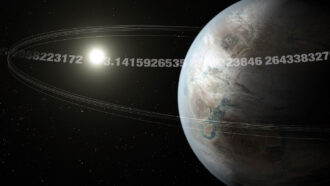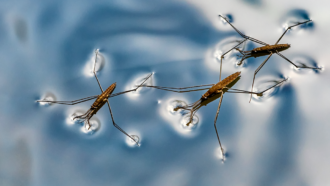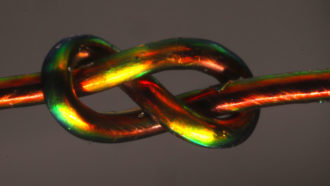Math

Educators and Parents, Sign Up for The Cheat Sheet
Weekly updates to help you use Science News Explores in the learning environment
Thank you for signing up!
There was a problem signing you up.
-
 Math
MathScientists Say: Outlier
Data points often fall within a normal range. When one data point sticks out a lot, it might be an outlier.
-
 Math
MathWhat the mummy’s curse reveals about your brain
A man died soon after opening a mummy’s tomb. But don’t assume the mummy killed him. Statistics help explain why coincidences may not be meaningful.
-
 Math
MathScientists Say: Algebra
Algebra is a type of mathematics that studies symbols and how they can be shifted around.
-
 Space
SpaceMeet ‘Pi’ — a new Earth-sized planet
Searching through data from NASA’s K2 Mission, researchers found a new planet. Some call it K2-315b, others smile and refer to it as “Pi Earth.”
-
 Physics
PhysicsScientists Say: Velocity
Velocity is more than speed. It is both speed and the direction in which an object is traveling.
-
 Computing
ComputingExplainer: What is an algorithm?
These step-by-step instructions underlie social media, internet searches and other computer-based activities. But what are they exactly? We explain.
-
 Animals
AnimalsTo figure out your dog’s ‘real’ age, you’ll need a calculator
What’s your dog’s human-equivalent age? Just multiply how old it is times seven, right? Uh, no. And here’s why.
-
 Humans
HumansWhen it comes to downing hot dogs, science says there’s a limit
Humans may be able to eat only 83 hot dogs in 10 minutes, new research suggests.
-
 Tech
TechWhy sports are becoming all about numbers — lots and lots of numbers
Sports once focused on muscles, skill and tactics. Now math is becoming almost as important. It helps assess players — and improve their tools.
-
 Math
MathLack of diversity in his field has troubled this mathematician
As a kid, Edray Goins didn’t like math. But he fell in love with the subject in college and is now training the next generation of minority mathematicians.
-
 Physics
PhysicsTry This: Walking on water with science
Water striders walk on water. How do they do it? They spread out. This experiment will show you how it works.
-
 Math
MathColor-changing fibers help unravel a knotty problem
Experiments with colorful fibers helped scientists discover a few simple rules on why the strength of various types of knots differs.